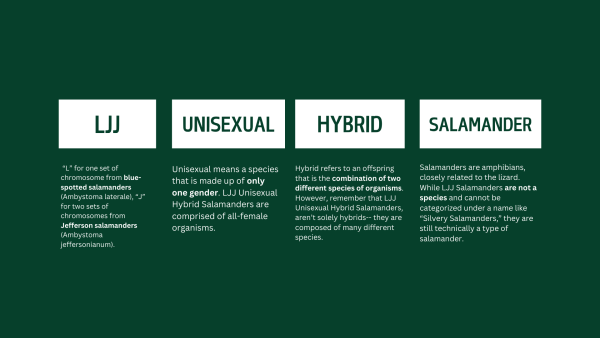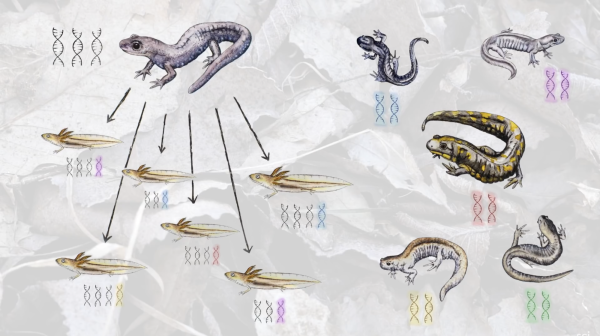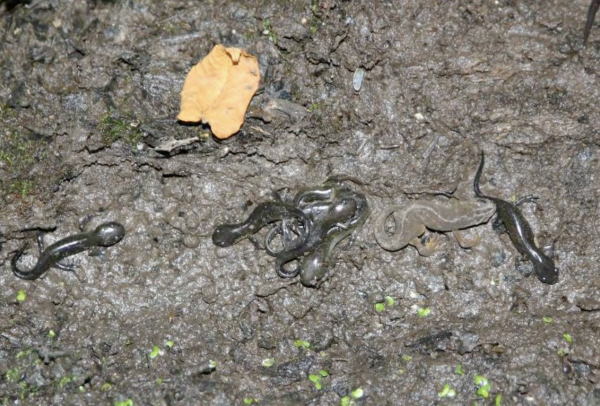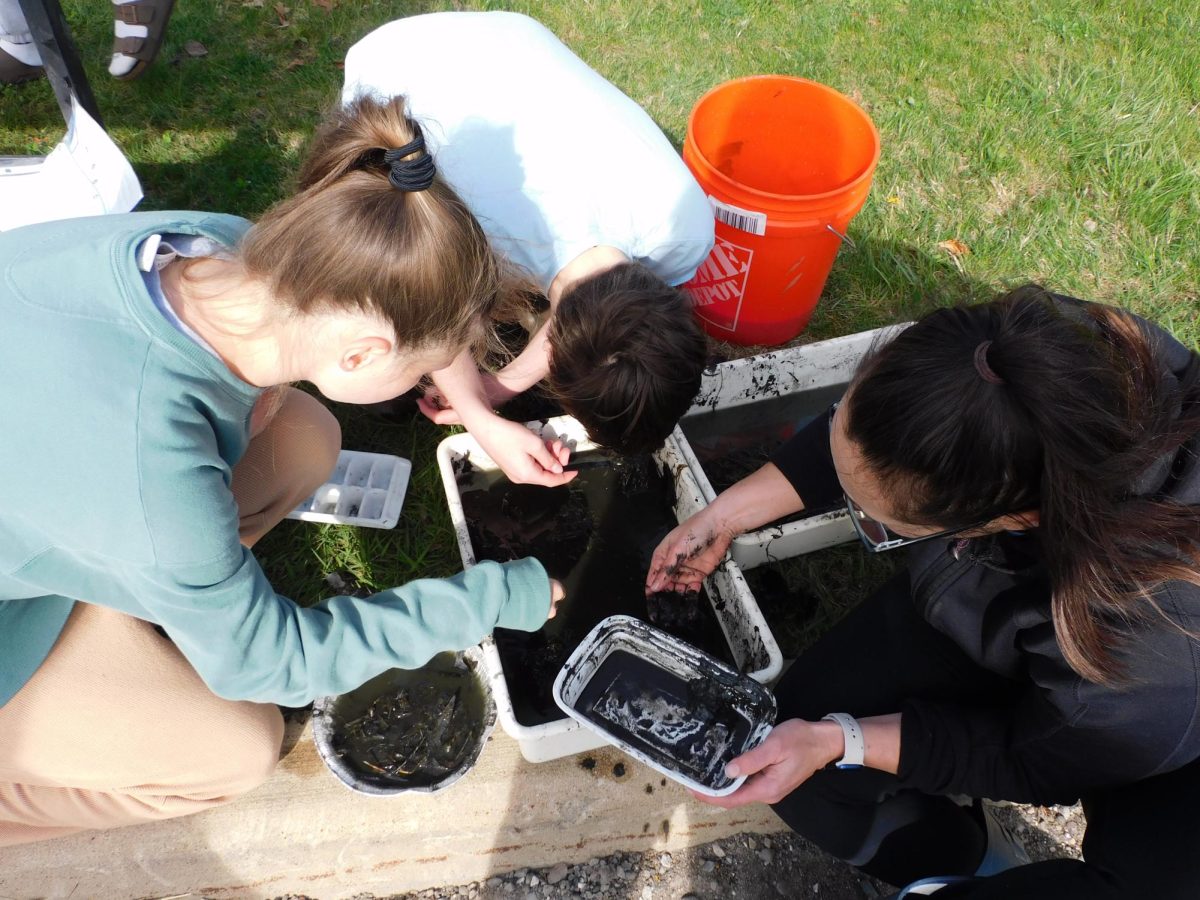Can two animals look the same, act the same, be born from the same mother, and yet be two different species? You can find an answer in a very particular kind of salamander which resides in the Skyline High School wetlands: the LJJ unisexual hybrid salamanders.
These salamanders are akin to legend in Skyline’s halls: ask around, and you’ll get a dozen variations of answers to what these creatures are, why they matter, and where they’ve gone. When these salamanders were discovered early on during Skyline’s construction, herpetologists originally thought that they were hybrids. However, they never were a species to begin with.
The key point which sets these salamanders apart is their unique genetic makeup.
Why are they called LJJ unisexual hybrid salamanders?

The term most people know the salamanders by is “Silvery Salamander.” Documents produced around the time of Skyline’s construction (herpetology reports and local online newsletters) record the animals under that name.
Today, herpetologists consider this name to be inaccurate. “It’s an obsolete name and bad science,” says George Hammond, an Ann Arbor Natural Area Preservation (NAP) herpetologist. The label has “not [been] used by scientists for many years.”
Using the name “Silvery Salamander” implies that these groups of salamanders are a species when, in actuality, they are not. The correct name is LJJ unisexual hybrid salamanders, due to the Abstomya species that contribute to the hybrids’ genetic makeup. The Ambystoma salamanders (or mole salamanders) are a group of salamanders found in North America.
- “L” for one set of chromosomes from Ambystoma Laterale (Blue-spotted salamanders)
- “J” for two sets of chromosomes from Ambystoma Jeffersonianum (Jefferson salamanders)
How are they able to reproduce?

The method of reproduction between these organisms is very complex. The process begins after the first spring rainfall. Just like sea turtles, who return to the beach they hatched from to mate and lay eggs, the salamanders migrate back to the wetland they were born to reproduce.
To do this, the unisexual females steal sperm from sperm packets that male species of Abstomya salamanders leave on the ground. After collecting this sperm, females are able to fertilize their eggs. This stimulates the development of the embryo.
Sperm holds DNA, but the males’ DNA isn’t always incorporated into the female’s embryo. When this occurs, the only DNA the offspring has is that of the mother. This process is how clones of the female salamander are produced, because they are made solely with the DNA of the female. Occasionally, the male’s DNA is incorporated in the embryo, resulting in many different combinations of genomes. This process is called kleptogenesis.
Why aren’t LJJ unisexual hybrid salamanders considered a species?

(David Misfud)
Because of their varying, complex genetic composition, these salamanders don’t neatly fit into the definition of a “species.” Their internal makeup depends heavily on contributions from other Ambystoma species, since they use sperm donors and don’t reproduce completely independently.
“The unisexuals were first thought to be hybrids; in other words, that a blue-spotted and Jefferson salamander could reproduce and create a unisexual,” says Katy Greenwald, a professor of Biology and Environmental Science at Eastern Michigan University. “We now know this is never the case — none of the sexual species breed with each other in the wild. The unisexuals are a unique 5-million-year-old lineage. They are, in fact, a ‘species complex’ and not a species.”
Species complexes are a group of closely related organisms that look the same, act the same, and are genetically tied, but cannot be grouped under one name because of each one’s different genetic material.
Since the sperm’s genetic material may or may not be incorporated into the developing embryo, it creates a wide variety of salamanders. This is why herpetologists no longer group all these salamanders under the name “Silvery Salamander.” In fact, they are a combination of so many different species in the Abstomya group.










